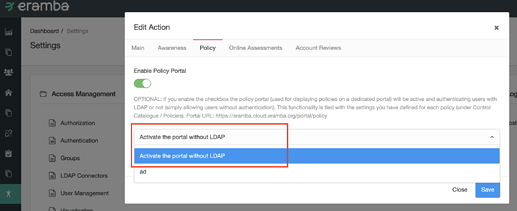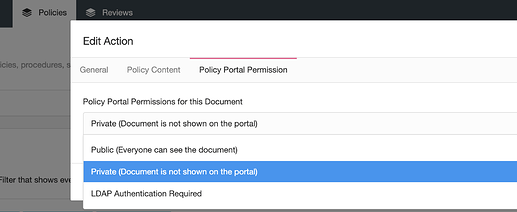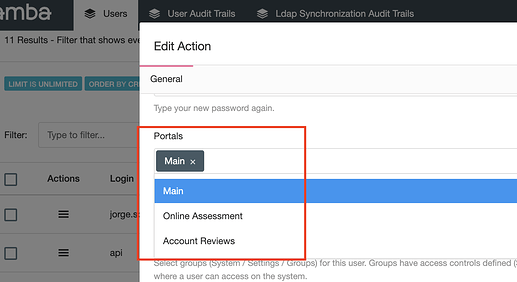On release 3.23 these changes has been implemented. If you are using the policy portal you will be affected, you need to review three things:
Portal Authentication Settings have been updated and simplified to rely on the main portal authentication system. The screenshots below show the old and the new interface for authentication.
- If you had the Portal “Disabled”, after the migration this will remain the same (nothing to do)
- If you had the Portal “Enabled” with some LDAP connector, after the migration this will remain as “Enabled”. Whatever authentication is on the “Main” portal will be used by the policy portal.
- If you had the Portal “Enabled”, with “Without LDAP”, after the migration this will remain as “Enabled”. Whatever authentication is on the “Main” portal will be used by the policy portal. If have have policies as “Public” they will be accessible by anyone.
Policy Settings (each individual policy) have also been updated to remove the LDAP authentication. The screenshot below shows the old and new options:
- Policies set as “Public”, after the migration remain the same
- Policies set as “Private”, after the migration remain the same
- Policies set as “LDAP”, after the migration will BE MODIFIED TO “Private”. You can change them to Public if you wish.
User Account Settings:
If you want users to be able to authenticate to the “Policy” portal, they will need to be given access on their account to this portal. You will see on release 3.23 an extra option on the Portal setting of accounts that includes “Policy”.




